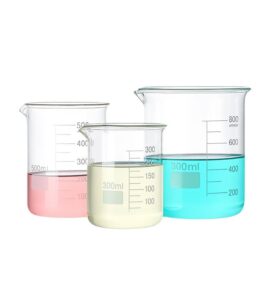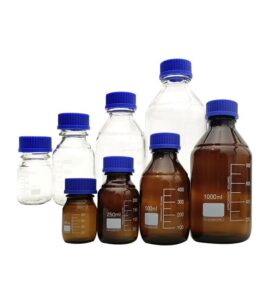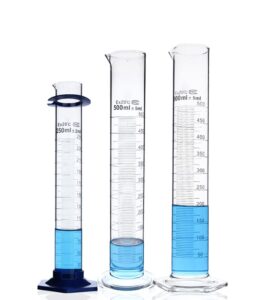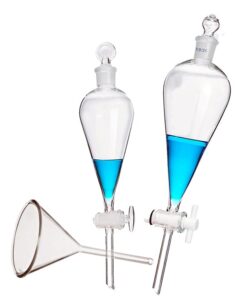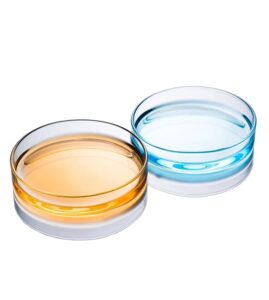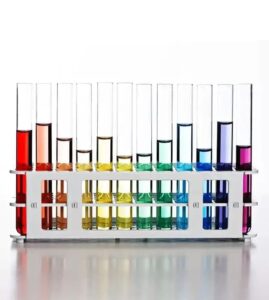Have you ever wondered how scientists and technicians ensure exact measurements in the lab? How does one tiny line on a piece of glassware dictate so much precision and accuracy? These lines are more than just markings; they are the backbone of scientific experiments and innovations.
The “Precision Lines” on glassware, known as graduations, are meticulously calibrated to ensure accurate volume measurements. Each line represents a specific volume, allowing for precise measurements of liquids. This precision is crucial in fields ranging from chemistry to pharmacology, where even the smallest error can lead to vastly different outcomes.
Stay tuned to uncover the layers behind these vital tools.
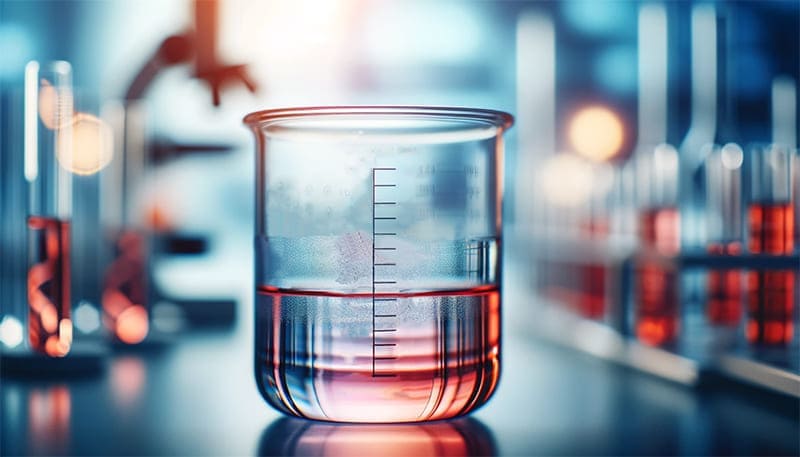
What Are Graduations in Glassware
Graduations on glassware refer to the markings and readings indicated on the instrument, used for measuring the volume or mass of liquids. These graduations are one of the key features of glassware, assisting laboratory personnel in accurately measuring and recording the volume or mass of liquids.
The method of marking graduations varies depending on the type of glassware. For example, volumetric flasks, beakers, and other container-type glass instruments usually have volume graduations marked on the exterior or bottom; whereas burettes, pipettes, and other precision glass instruments typically have volume or graduated markings inside the instrument.
How Are Glassware Graduations Made
The creation of glassware graduations is a blend of art and science. It starts with glassblowing, where the glass is formed into the desired shape. Once the glassware is formed, the graduations are applied. This can be done through etching or printing, with each method requiring a high level of accuracy. The finished product is then tested and calibrated to ensure that each mark accurately represents the intended volume.

Precision Lines: Materials and Techniques in Laboratory Glassware Manufacturing
In laboratory settings, the choice of glass and manufacturing techniques is crucial for the precision and durability of glassware graduations. Borosilicate glass is widely favored for its thermal shock resistance and low thermal expansion, maintaining measurement accuracy across temperature variations. These properties are vital for ensuring that the precise volume markings remain consistent and reliable.
Precision glassblowing, etching, and printing are key techniques in applying graduations, demanding skilled craftsmanship and strict quality control. After formation, the glassware is tested and calibrated to ensure each graduation accurately represents the intended volume.
Other materials like soda-lime glass or quartz may be used for specialized applications, each chosen for its balance of cost, durability, and resistance properties. The continuous innovation in materials and techniques reflects the commitment to precision in scientific measurement, making modern laboratory glassware a testament to accuracy and reliability.
Precision Lines: Navigating International Standards for Glassware Graduations
Precision in laboratory measurements is universally anchored by stringent international standards. These standards, varying slightly by focus and application, set the benchmark for the accuracy of graduation lines on glassware. Understanding these differences is key to maintaining global consistency in scientific research.
| Standard | Focus of Standards | Calibration Criteria | Notable Requirements |
|---|---|---|---|
| ISO | Uniform quality and performance | Regular calibration and verification | Specifics on design, material, and precision |
| ASTM | Dimensional and performance specifications | Detailed testing methods | Guidelines on manufacturing and usage |
As we delve into these standards, we’re not just following protocols; we’re upholding the precision that is vital to our scientific endeavors. It’s through these meticulous guidelines that we ensure the integrity and reliability of every measurement we take.

Why Are Precision Lines Important
In any scientific or medical setting, the accuracy of measurements is paramount. Precise measurements can mean the difference between success and failure in an experiment or the correct dosage of a medication. The graduations on glassware provide a visual guide for precise measurements, ensuring consistency and reliability in various applications.
The Science Behind Calibrating Glassware
Calibrating glassware involves comparing the marked volumes against a known standard. This process ensures that the markings accurately represent the actual volume. Various factors, such as the temperature and the coefficient of expansion of the glass, are taken into consideration during calibration. This meticulous process underscores the importance of precision in every aspect of glassware production and usage.

Different Types of Graduated Glassware
There are many types of graduated glassware, each designed for specific purposes. For example, volumetric flasks are used for precise dilutions and preparations of standard solutions. Burettes are used in titrations to deliver measured volumes of a reactant. Pipettes and measuring cylinders are also common, each with their specialized graduations for different measurement needs.
Here is a table listing various types of graduated laboratory glassware along with their specific uses:
| Type of Glassware | Graduation Details | Common Uses |
|---|---|---|
| Volumetric Flasks | Precise single volume mark | Used for making and diluting solutions to a known volume. Ideal for preparing standard solutions. |
| Burettes | Graduated along the length | Commonly used in titrations to measure the volume of a reactant added precisely. |
| Pipettes | May have a single or multiple graduations | Used to transfer or measure a precise volume of liquid. Types include volumetric and Mohr pipettes. |
| Measuring Cylinders | Graduated along the length | Used for measuring various volumes of liquids, not as precise as volumetric flasks or pipettes. |
| Graduated Cylinders | Graduated along the length | Similar to measuring cylinders but often more precise and may be used in a wider range of experimental setups. |

Key Strategies for Graduation Management in Laboratory Glassware
In the realm of scientific research, the accuracy of every measurement hinges on the reliability of the tools used. Particularly in the case of laboratory glassware, the precise management of graduations is a fundamental aspect that demands attention. Let’s delve into the strategies that ensure the highest standard of precision.
- Choosing the Right Glassware: Based on the needs of the experiment, select glassware with the appropriate capacity and accurate graduations. For instance, in chemical experiments, volumetric flasks, beakers, and burettes need to be chosen according to specific requirements of capacity and precision.
- Confirming Graduation Placement: For glassware with external graduations, it’s important to confirm that the markings are accurately placed. For glassware with internal graduations, it’s crucial to ensure that the markings are clear and easy to read.
- Checking Graduation Integrity: Laboratory personnel should inspect the glassware for complete and clear graduations, avoiding any that are incomplete or blurred. If any issues with graduations are found, it’s necessary to promptly replace the glassware with a suitable alternative.
- Attention to Calibration and Maintenance: Regular calibration and maintenance of glassware are necessary. If inaccuracies in the graduations are discovered, adjustments or replacements should be made promptly.
To sum up, maintaining high precision in laboratory measurements is a meticulous process that relies on the proper management of glassware graduations. Through careful selection, regular inspection, and diligent maintenance of glassware, scientists and technicians can significantly enhance the accuracy of their experimental results, fostering reliability and trust in scientific outcomes.

Challenges and Solutions in Graduation Accuracy
Maintaining and verifying the accuracy of graduations on laboratory glassware is fraught with challenges. Common issues include wear and tear from regular use, the impact of improper cleaning procedures, and errors in handling techniques. Each of these factors can significantly affect the precision of measurements.
Wear and tear, for instance, can gradually erode the clarity and accuracy of graduation lines. To mitigate this, it’s essential to regularly inspect glassware and retire pieces that show significant signs of degradation. Implementing a scheduled replacement plan can ensure that all glassware remains within acceptable accuracy margins.
Cleaning procedures also play a critical role. Residues from previous experiments can alter the volume contained or delivered by glassware. Using proper cleaning agents and techniques ensures that no residues are left behind. It’s also crucial to thoroughly rinse and dry glassware to avoid water marks that might obscure graduations.
Handling techniques must be taught and reinforced regularly. Mishandling can lead to micro-cracks or chips, especially near the graduation marks, affecting the integrity of measurements. Training staff in the correct handling and storage of glassware can reduce these risks.
By addressing these challenges with informed solutions and best practices, laboratories can maintain the high level of accuracy required for their scientific work, ensuring that every line of precision on their glassware continues to deliver reliable and consistent results.
Conclusion
As we close the chapter on ‘Precision Lines: Unveiling the Secrets of Glassware Graduations,’ let’s embrace the meticulous world of scientific measurement with a renewed commitment to accuracy. Remember, each line of precision on your glassware is a testament to centuries of scientific innovation. Continue exploring, questioning, and refining your practices, for in the pursuit of precision lies the path to discovery. Keep measuring, keep innovating, and let’s push the boundaries of science together!


